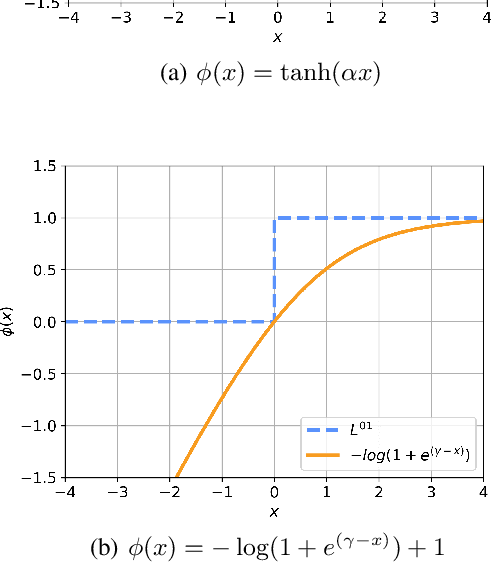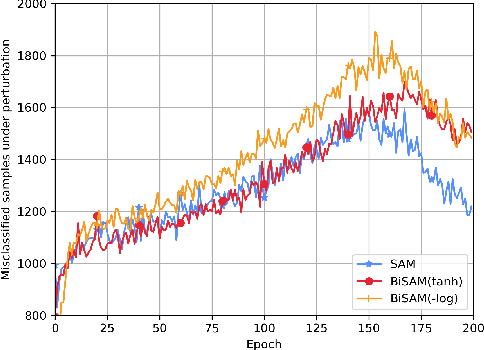Wanyun Xie
Chameleon: A Flexible Data-mixing Framework for Language Model Pretraining and Finetuning
May 30, 2025Abstract:Training data mixtures greatly impact the generalization performance of large language models. Existing domain reweighting methods often rely on costly weight computations and require retraining when new data is introduced. To this end, we introduce a flexible and efficient data mixing framework, Chameleon, that employs leverage scores to quantify domain importance within a learned embedding space. We first construct a domain affinity matrix over domain embeddings. The induced leverage scores determine a mixture that upweights domains sharing common representations in embedding space. This formulation allows direct transfer to new data by computing the new domain embeddings. In experiments, we demonstrate improvements over three key scenarios: (i) our computed weights improve performance on pretraining domains with a fraction of the compute of existing methods; (ii) Chameleon can adapt to data changes without proxy retraining, boosting few-shot reasoning accuracies when transferred to new data; (iii) our method enables efficient domain reweighting in finetuning, consistently improving test perplexity on all finetuning domains over uniform mixture. Our code is available at https://github.com/LIONS-EPFL/Chameleon.
Training Deep Learning Models with Norm-Constrained LMOs
Feb 11, 2025Abstract:In this work, we study optimization methods that leverage the linear minimization oracle (LMO) over a norm-ball. We propose a new stochastic family of algorithms that uses the LMO to adapt to the geometry of the problem and, perhaps surprisingly, show that they can be applied to unconstrained problems. The resulting update rule unifies several existing optimization methods under a single framework. Furthermore, we propose an explicit choice of norm for deep architectures, which, as a side benefit, leads to the transferability of hyperparameters across model sizes. Experimentally, we demonstrate significant speedups on nanoGPT training without any reliance on Adam. The proposed method is memory-efficient, requiring only one set of model weights and one set of gradients, which can be stored in half-precision.
SAMPa: Sharpness-aware Minimization Parallelized
Oct 14, 2024



Abstract:Sharpness-aware minimization (SAM) has been shown to improve the generalization of neural networks. However, each SAM update requires \emph{sequentially} computing two gradients, effectively doubling the per-iteration cost compared to base optimizers like SGD. We propose a simple modification of SAM, termed SAMPa, which allows us to fully parallelize the two gradient computations. SAMPa achieves a twofold speedup of SAM under the assumption that communication costs between devices are negligible. Empirical results show that SAMPa ranks among the most efficient variants of SAM in terms of computational time. Additionally, our method consistently outperforms SAM across both vision and language tasks. Notably, SAMPa theoretically maintains convergence guarantees even for \emph{fixed} perturbation sizes, which is established through a novel Lyapunov function. We in fact arrive at SAMPa by treating this convergence guarantee as a hard requirement -- an approach we believe is promising for developing SAM-based methods in general. Our code is available at \url{https://github.com/LIONS-EPFL/SAMPa}.
Improving SAM Requires Rethinking its Optimization Formulation
Jul 17, 2024



Abstract:This paper rethinks Sharpness-Aware Minimization (SAM), which is originally formulated as a zero-sum game where the weights of a network and a bounded perturbation try to minimize/maximize, respectively, the same differentiable loss. To fundamentally improve this design, we argue that SAM should instead be reformulated using the 0-1 loss. As a continuous relaxation, we follow the simple conventional approach where the minimizing (maximizing) player uses an upper bound (lower bound) surrogate to the 0-1 loss. This leads to a novel formulation of SAM as a bilevel optimization problem, dubbed as BiSAM. BiSAM with newly designed lower-bound surrogate loss indeed constructs stronger perturbation. Through numerical evidence, we show that BiSAM consistently results in improved performance when compared to the original SAM and variants, while enjoying similar computational complexity. Our code is available at https://github.com/LIONS-EPFL/BiSAM.
Stable Nonconvex-Nonconcave Training via Linear Interpolation
Oct 20, 2023Abstract:This paper presents a theoretical analysis of linear interpolation as a principled method for stabilizing (large-scale) neural network training. We argue that instabilities in the optimization process are often caused by the nonmonotonicity of the loss landscape and show how linear interpolation can help by leveraging the theory of nonexpansive operators. We construct a new optimization scheme called relaxed approximate proximal point (RAPP), which is the first explicit method to achieve last iterate convergence rates for the full range of cohypomonotone problems. The construction extends to constrained and regularized settings. By replacing the inner optimizer in RAPP we rediscover the family of Lookahead algorithms for which we establish convergence in cohypomonotone problems even when the base optimizer is taken to be gradient descent ascent. The range of cohypomonotone problems in which Lookahead converges is further expanded by exploiting that Lookahead inherits the properties of the base optimizer. We corroborate the results with experiments on generative adversarial networks which demonstrates the benefits of the linear interpolation present in both RAPP and Lookahead.
 Add to Chrome
Add to Chrome Add to Firefox
Add to Firefox Add to Edge
Add to Edge